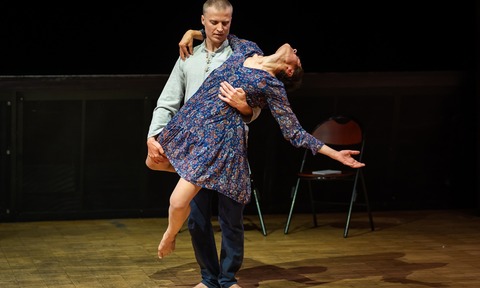|
Sunday 5. 11.
info Through A Painting To Consciousness Colored post – this group’s art is based on dynamic, spontaneous expression. This can serve as a source of unbiased information not only for the therapist, but also for the group as a whole as well as for the client on an individual level – Structure of the group Optimally the group should have between 10–12 members, and it is very important that different types of people are represented in the group. The age of the members is not very important. The group should be acquainted with each other at least to some degree. It is best to not include an artistic activity at the beginning of the therapeutic program. This kind of activity is also not recommended for clients who momentarily experience acute panic as a result of many changes. Materials It is very important to have a diverse selection of materials, so that everyone is able to find a way of expression that corresponds to their personality and so that everyone can become acquainted with various types of material… Cardstock of at least A2 size, brushes of different sizes and shapes, medium paint brushes, palette knives, dowels, graphic rollers, small sponges, watercolors and tempera paint, ink, oil and dry chalk, pastels, angles, pencils, scissors and glue, watches with second hands. Process The group sits around one large table, on which the cardstock is prepared and the materials are distributed such that everyone can reach them. The therapist introduces the activity to the group. It may be enough just to say what is going to happen and not why, so as not to cause interference or to invoke anxiety. Rather the whole activity may be presented as a game that offers many possibilities, many solutions, many resolutions, etc… Setting
After 3 minutes everyone must again stop painting and pass the paintings on to the next person. Continue painting and passing and stopping until each “picture frame” returns back to its original owner. This person now leaves the painting alone. (And can now only look at it…) During creation it may happen that someone will want to change water, refill paint in the palette, etc. Anything is possible. It is better to leave these things until the rotation time, which is un-timed. A frequent question is if they must continue to alter the painting when the painting appears finished and it has not yet been returned to its owner. They do not have to. However, this does not mean that a subsequent person cannot alter the painting. If a later person feels that s/he wants to have the last “word,” then s/he has the right. What the therapist can observe First of all, the manner of framing. The frame often illustrates the person’s defense systems, which are presented in normal life and which serve to protect him or her. Some frames stay intact during the activity, others will be painted over…one will have the tendency in the paintings to adjust the frames more than to continue the painting… In point no. 2 it is important to note not only how much space the client leaves for others, but also for which member. Throughout the activity observe as well who only adapts, who has the tendency to protest, who likes to destroy, who plays the role of rescuer, who is always finished quickly and who can’t finish on time, etc. It is good to notice who determines the artistic direction to which the others more or less defer. Other important points include the choice and preference of material. A significant role is played by the palette knife, with which something is scrapped (possibly also scrapping a concrete shape into the painting), taking with it a scrapped-out shape, eventually wearing through the cardstock. Thanks to the fact that there is no time to think, it often it happens that the palette knife understands that which is aggressively hidden or is otherwise not accessible. Work with the roller has a similar effect, as it is able to roll over many things and many people. As far as the therapist succeeds in setting a free atmosphere, s/he can be witness to spontaneous commentaries that hold great meaning in therapy. It is good to remember to unobtrusively take notes at some point. Concluding the artistic activity It does not have to happen that after painting and cleaning, the time is up and there isn’t enough time for group discussion. Cleaning can be left until the very end. First each person has the opportunity to express how the painting returned to them, what it is called and what meaning it holds for them. The group can think about why this continuing story returned to the person with whom it began – in his/her view why was this was a contradictory accomplishment, and whether a similar type of reaction also occurs in everyday activities. It is significant how they react to the following sentiment: “I liked that I wasn’t in it alone.” This can point in part to dependence on others and an inability to take things on themselves and on the other hand it may be enjoyable experience for those who have an excessive feeling that everything has to be done alone. To observe the group while cleaning up can also be beneficial. Why, I perhaps don’t even need to explain. |
|













